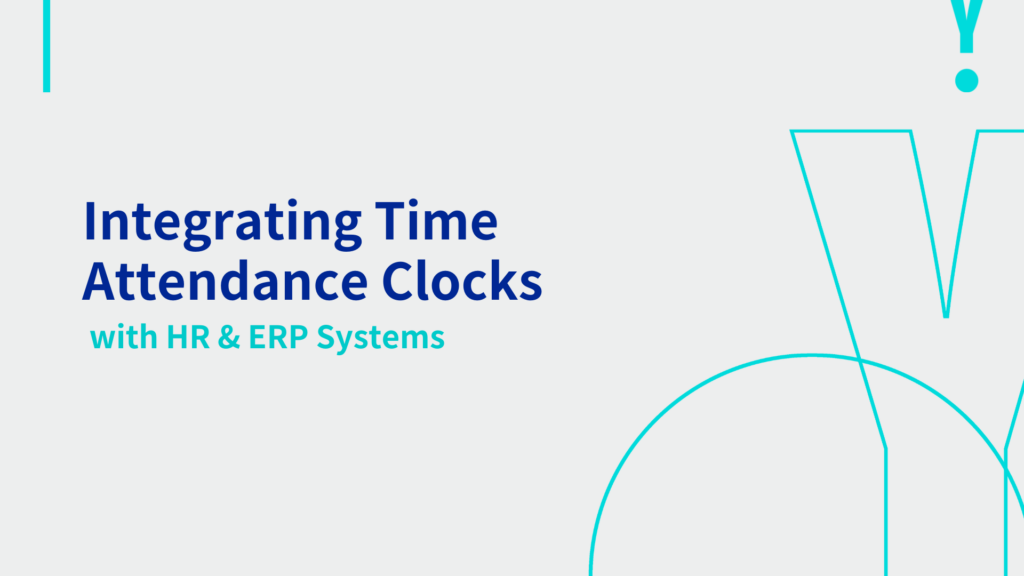
Managing workforce data often feels overwhelming for businesses juggling multiple systems. Attendance information sits in one corner, HR details elsewhere, while ERP platforms manage financial or operational insights separately. This siloed setup delays decision-making, increases administrative overhead, and leaves room for frustrating inaccuracies.
Businesses crave one unified solution that connects every moving part seamlessly. Integrating a time attendance clock with HR and ERP systems can bridge these gaps effortlessly. With real-time data flow and accurate insights, organizations save valuable hours while empowering managers with clarity.
This blog explains why syncing attendance data matters, how automation streamlines tasks, and most importantly, how integration supports smarter business decisions.
- Why Integration of An Efficient Time Attendance Clock Matters?
- How Time Attendance Clocks Work with HR Systems?
- Connecting Attendance Data with ERP Platforms
- Key Benefits of Seamless Integration
- Addressing Common Business Pain Points
- Steps to Achieve Successful Integration
- Overcoming Integration Challenges
- Role of Cloud-Based Integration
- Future Trends in Workforce Automation
- Final Thoughts
Why Integration of An Efficient Time Attendance Clock Matters?
Time attendance data fuels several business functions beyond payroll. Without integration, organizations rely on manual entries, which are error-prone and time-consuming.
- Disconnected Systems Limit Visibility: Managers cannot view employee schedules, absences, and costs together, thus leading to partial insights.
- Inaccurate Records Increase Compliance Risks: Errors in overtime or leave calculations may result in penalties or employee dissatisfaction.
- Silos Create Inefficiencies: HR departments chase spreadsheets, while finance teams struggle to reconcile employee hours with operational budgets.
Therefore, integrating attendance systems with HR and ERP is no longer optional. Instead, it has become a strategic necessity for businesses seeking growth.
How Time Attendance Clocks Work with HR Systems?
Modern time attendance systems capture real-time punches using biometric scanners, RFID cards, or mobile applications. When integrated with HR systems, data flows instantly.
- Automated Leave Tracking: Absences recorded on clocks update HR records, ensuring managers view accurate leave balances without manual entries.
- Performance Monitoring: HR professionals having access to a workforce time and attendance system gain better visibility into punctuality, overtime trends, and scheduling efficiency.
- Improved Employee Experience: Staff members trust HR processes when payroll calculations and leave balances match their actual working hours seamlessly.
Thus, HR teams spend less time cross-verifying spreadsheets and more time building meaningful employee strategies.
Connecting Attendance Data with ERP Platforms
Enterprise Resource Planning (ERP) systems act as central business hubs for accounting, supply chains, procurement, and more. Attendance integration strengthens this backbone.
- Accurate Labor Costing: Attendance hours feed into ERP costing modules, helping organizations monitor workforce expenses by project or department.
- Real-time Forecasting: Managers forecast staffing needs better when attendance data flows into planning modules directly.
- Compliance Made Simpler: ERP systems align labor costs, statutory deductions, and workforce availability, ensuring regulatory adherence automatically.
Consequently, ERP integration ensures decisions are based on holistic data rather than incomplete inputs from siloed systems. So, if you want to integrate the best attendance systems with an existing ERP, consult our professionals at YOOV.
Key Benefits of Seamless Integration
Improved Accuracy across Functions
Errors caused by manual entries or duplicate records disappear once attendance systems sync with HR and ERP platforms. Accurate inputs drive reliable outputs.
Time Savings for HR & Finance Teams
Instead of reconciling scattered data, teams focus on analysis and strategy. Automation through the best time attendance clocks reduces paperwork while boosting workforce productivity.
Enhanced Decision-Making with Real-Time Insights
Leadership gains timely visibility into workforce patterns, absenteeism, and costs, supporting smarter staffing and budgeting decisions.
Stronger Compliance And Audit Readiness
With integration, organizations maintain audit trails automatically. Every record remains consistent, verifiable, and aligned with statutory requirements.
Employee Satisfaction & Trust
Employees’ trust in company systems increases significantly. It happens when they see transparent, accurate pay slips and leave records.
Addressing Common Business Pain Points
- Pain Point 1: Manual Data Entry Overload
Businesses waste countless hours updating HR and ERP platforms separately. Integration ensures updates happen automatically without duplication.
- Pain Point 2: Payroll Inaccuracies And Disputes
Discrepancies between recorded hours and processed payroll frustrate employees. Integration eliminates mismatches by syncing verified clock-in data instantly.
- Pain Point 3: Limited Managerial Visibility
Disconnected systems restrict leaders from viewing operational and workforce data together. Integration unlocks real-time dashboards with comprehensive insights.
- Pain Point 4: Compliance Worries
Complex labor laws as well as tax regulations require precise data. Integration ensures every calculation aligns with local and global compliance frameworks.
Steps to Achieve Successful Integration
- Step 1: Assess Existing Infrastructure
Evaluate current attendance clocks, HR systems, and ERP platforms. Identify gaps and integration possibilities before beginning the project.
- Step 2: Choose Compatible Solutions
Not all clocks or ERP systems integrate seamlessly. You need an efficient workforce time and attendance system in your offices. Hence, select solutions offering APIs, connectors, or middleware for smoother compatibility.
- Step 3: Plan A Phased Implementation
Avoid overwhelming teams by rolling out integration in stages. Start with payroll sync, then expand to advanced analytics.
- Step 4: Train Employees And Managers
Integration succeeds only when end-users understand new workflows. Conduct workshops and provide user-friendly training material for smooth adoption.
- Step 5: Monitor, Refine, And Scale
Post-implementation, monitor system performance. So, gather feedback, refine processes, and gradually scale integration to other modules or departments.
Overcoming Integration Challenges
Challenge 1: Legacy Systems And Compatibility Issues
Older HR or ERP systems may resist direct integration. Middleware tools or custom APIs help overcome compatibility challenges effectively.
Challenge 2: Data Security Concerns
Syncing sensitive workforce data raises security risks. Businesses must prioritize encryption, role-based access, and compliance with data protection laws.
Challenge 3: Resistance to Change
Employees may resist new systems. Continuous communication and demonstrating time savings can encourage acceptance and adoption.
Challenge 4: Budget Constraints
Integration projects require investment. However, long-term efficiency gains outweigh initial expenses through reduced errors and streamlined operations.
Role of Cloud-Based Integration
Cloud platforms simplify integration between attendance, HR, and ERP systems significantly. Cloud-based time attendance clocks effectively reduce hardware costs. Meanwhile, these systems ensure flexibility and scalability.
- Centralized Access: Data becomes available across locations in real-time, perfect for remote teams or multiple business units.
- Scalability: Businesses expand workforce size without worrying about system limitations.
- Automatic Updates: Cloud providers ensure integrations stay aligned with evolving HR or ERP software upgrades.
Thus, cloud integration accelerates automation with minimal maintenance burdens for IT teams.
Future Trends in Workforce Automation
Businesses must prepare for the future, where automation expands beyond attendance integration.
- AI-Powered Analytics: Machine learning will predict absenteeism trends, enabling proactive workforce planning.
- IoT-enabled Devices: Smart wearables may soon replace traditional clocks, feeding attendance directly into business systems.
- Global Compliance Automation: Cloud-based ERP platforms will auto-adjust workforce data for diverse regulatory frameworks.
These innovations promise greater efficiency and competitive advantage for businesses embracing integration early.
Final Thoughts
Most importantly, employees trust systems that reflect reality consistently. While integration requires careful planning, the payoff in efficiency, clarity, and confidence is undeniable. Businesses that embrace seamless automation now position themselves ahead in tomorrow’s competitive landscape. Here, we at YOOV can help. To know more about this, connect with us today!
Integrating time attendance clocks with HR and ERP systems is no longer just a technology upgrade. It is a business transformation. Therefore, by eliminating silos, businesses empower HR, finance, and leadership teams with a single source of truth. Consequently, accuracy improves, compliance strengthens, and decision-making accelerates.
Connect with YOOV

WhatsApp:Click Here
Email:hello@yoov.com
Website:https://www.yoov.com/